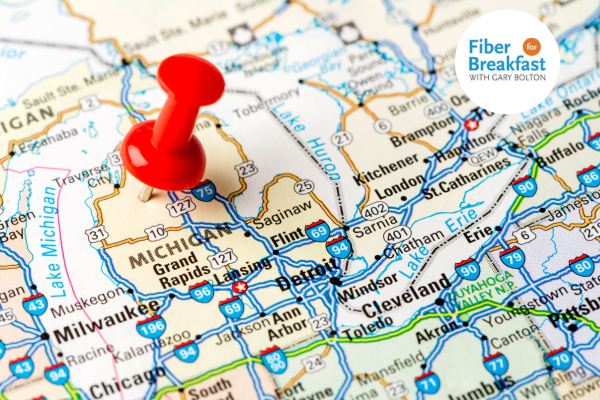Cheap Sneakers or Good Shoes? Investing in Fiber for the Long-Term
“The future is already here. It’s just unevenly distributed.” William Gibson
Everyone loves a bargain, but you often get what you pay for. If I had no shoes, I could buy a pair of cheap sneakers to cover my feet, but they aren’t good for long-term use or heavy wear. After a year, the sneakers start to wear out and hurt my feet because I’m trying to push them to do things they weren’t designed to do. So, my lowest-cost purchase eventually puts me back at the store to replace them.
On the other hand, if I invest in good quality footwear, I’ll have a pair of shoes that last for a lifetime, replacing the laces occasionally if they wear out. While they may cost more initially, purchasing a higher quality pair saves me from the cost of replacing them annually. Some pundits for more “affordable” broadband technologies see a lot of people without shoes or poor-quality shoes and believe the simplest solution is to buy everyone new sneakers. Everyone gets a little broadband so policy makers can declare victory over the Digital Divide, but communities end up stuck with a good-enough-today solution that ends up pinching them over time.
Communities have and will continue to outgrow good-enough broadband solutions. One of the biggest mistakes made in earlier federal broadband programs was setting a minimal floor for service delivery. The FCC 25/3 Mbps guideline set a decade ago has proven to be inadequate for today’s minimal requirements as neighborhoods and businesses embrace work-from-home, telemedicine, distance learning, e-commerce, precision agriculture, construction digitalization, Smart Home, Smart City, and Smart Grid applications to create jobs and improve quality of life.
Buying good-enough-today broadband solutions without a future-proof upgrade path puts communities on a hamster wheel buying cycle, with no way to get ahead of the growth curve for more information. As usage increases and good-enough technologies age out, there’s not enough money to both invest in upgrades to the next good-enough technology and to invest in other areas that create new opportunities, such as workforce training, device access, and applications.
Both traditional telecom carriers and cable MSOs are moving to multi-gig services because of the demonstrated need for more broadband both residentially and commercially. Fiber is a proven upgradable media. The first fiber-to-the-home deployments set up nearly twenty years ago to deliver 100 Mbps speeds are now being taken to 10 Gbps speeds by simply replacing the electronics, leaving the glass intact. Today’s 10 Gbps PON services have a clear path to affordably deliver up to 100 Gbps within the next five years.
Investing in fiber means investing for the long-term, providing sufficient bandwidth today with a technology that can be easily and affordably upgraded to accommodate the needs of people, businesses, and communities as they grow economically.




